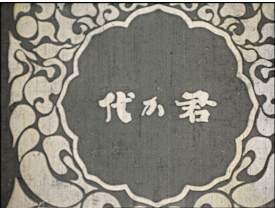National Anthem, Kimigayo
| Original Title | 國歌 君か代 |
|---|---|
| Japanese kana Rendering | Kokka Kimigayo |
| English Title | National Anthem, Kimigayo |
| Production Date | 1931 |
| Author | Noburo Ofuji |
| Duration (minutes) | 4 |
| Sound | sound |
| Color | b/w |
| Plot | The chrysanthemum crest opens as the song progresses, and reveals the creation gods Izanagi and Izanami on the Ama no Ukihashi (heavenly bridge). They thrust the Ama no Nuboko (heavenly spear) into the sea, and the water droplets falling from the spear become the islands of Japan. Because of the violent actions of her brother Susanoo, the sun goddess Amaterasu retreats and shuts herself in the Ama no Iwato (heavenly cave). The gods gather around the cave and the goddess Ame no Uzume dances in front of it. As Amaterasu peers out to see what is happening, the god Tajikarao pushes open the rock door, bringing forth the glorious light of heaven once again. The golden kite lands on top of the heavenly bow that emerges from among the clouds. The light emanating from the kite repels the evil spirits of Japan. Finally, the three sacred treasures (the sacred sword, jewel, and mirror) emerge. |
| Description | In Japan in those days, the national anthem was often played at the beginning of a film. Responding to the proposal of Bunzaburo Banno, owner of Banno Shoten, that the national anthem be played before the show even at small gauge film screenings, Noburo Ofuji produced this work for small gauge films. Inspired by German silhouette animations, such as Caliph Stork (1923, Edwald Mathias Schumacher) and The Adventure of Prince Achmed (1926, Lotte Reiniger),* Ofuji produced the silhouette animation movie Whale in 1927. However, he was not satisfied with this work. (*Caliph Stork was released in Japan in 1924 and The Adventure of Prince Achmed in 1929). At this time, Ofuji was recognized for cut-paper animations created using Japanese patterned paper. However, to take up the challenge of making a silhouette animation film for the national anthem, Kimigayo, he built a new camera stand and completed his work after failing three times. Made based on Japanese mythology, this film is an important work as a forerunner of the post-war Kojiki Monogatari series. This film is a record talkie (silent film with synchronized sound on disc) and its original was a 9.5mm film. However, a 16mm version was also released. The record released by Columbia Records was produced by the Ministry of Education and the music was performed by Tokyo Music School. |
| Production Company | Chiyogami Eigasha* |
| Distribution | Banno Shoten* |
| Release Date | Feb 1931 |
| Credits: Director | Animation: Noburo Ofuji |
| Credits: Staff, Cast, etc. | |
| Intertitles | T1「國歌 謹寫 大藤信郎 コロンビアレコード(32999)」、T2「君か代」、T3「君か代は 千代に 八千代に さされ 石の いはほと なりて 苔の むすまて」、T4「終」。 |
| Censorship - Date and Number | |
| References | ・ Gravure: National Anthem, Kimigayo, Pathé-Cine, February 1931, p. 7. ・ Noburo Ofuji, "Production of National Anthem, Kimigayo," Pathé-Cine, February 1931, pp. 30-31. ・ Bunzaburo Banno, "National Anthem, Kimigayo produced by Noburo Ofuji," Pathé-Cine, March 1931, pp. 16-17. ・ "Introduction to New Educational Movies: Cutout Movie National Anthem, Kimigayo," Eiga Kyoiku, No. 37 (March 1931), p. 36 (with photos). ・ "Introduction and Review of Short Movies: Kimigayo," Kinema Junpo, No. 395 (March 21, 1931), p. 76. |
| Frames per Second | 16fps |
| Source of Digital Copy | The 16mm positive donated from individuals |
| Completeness | complete |
| Additional Notes | The mark of "*" will provide an additional explanation gained from the bibliographical information. |
| Related Links |
Please tell us what you think about this website by filling out a short questionnaire.
To educational users: Please provide us with feedback on website usage for educational purposes.
- Unauthorized copying and replication of the contents on this site are prohibited.
